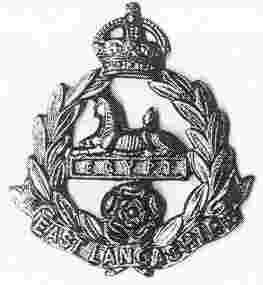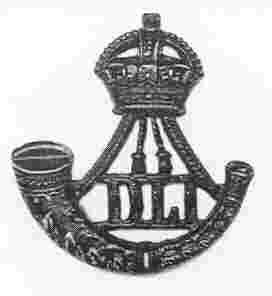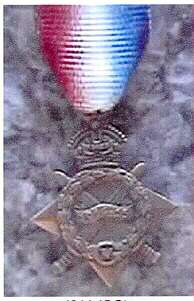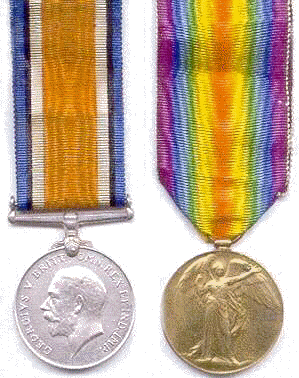



HUGHES, Edward
Captain
2nd Battalion,
Durham Light Infantry
18th Brigade, 6th Division
who died of wounds on
Saturday, 16th September 1916. Aged 30
Edward was married and lived with his wife, Louisa in Layer Road, Abberton.

Edward was born 15th September 1887. He joined the East Lancashire Regiment, as an eighteen year old in 1905. He served in the ranks for 9 years and 313 days before receiving a Field Commission. He had gone to France on the 22nd August in 1914 and was serving as Company Quartermaster Sergeant Major with the East Lancashire Regiment, when he was promoted 2nd Lieutenant on the 25th July 1915 for services in the field. He transferred to the 2nd Battalion Durham Light Infantry from 12th September 1915.
He was made a temporary Lieutenant on the 6th March 1916 and was acting Captain during the Battle of the Somme, 1st July till 18th November 1916.
At the outbreak of the War, the 1st Battalion East Lancashire Regiment were at Colchester and it is probable that the Hughes moved into Abberton at this time. The 1st Battalion became part of 11th Brigade of the 4th Division. They moved to France in time to help the hard pressed BEF fighting at Le Cateau on 26th August 1914.
Edward's Brigade were involved in a number of battles through 1914 and early 1915 while he was still with the East Lancashire Regiment :-
Marne 7-10th September 1914, Aisne 12 - 15th September 1914, Messines 12th October 1914, St. Julien 24th April 1915, Frezenburg 8-13th May 1915 and Bellewaarde 24-25th 1915.
The following message was sent to the Officer Commanding 2nd Durham Light Infantry from the General Staff on the 16th May 1916 :- "The G. O. C. wishes me to inform you that he is very pleased with the work of the patrol commanded by Lieut. Hughes, 2nd Durham l. I. signed G. F. Boys Lt. Col General Staff"
The 6th Division played a major role in the Battle of Flers-Courcelette between 15th and 22nd September 1916. The following is an excerpt from "The history of the D. L .I." :-
"On the right of the attack was the 6th Division, containing the 2nd and 14th Battalions, which had come south from the salient at the end of July and had spent August on the Ancre opposite Beau-Hamel. having entered the XIV Corps front on the 8th September, it lay opposite a spur held by the enemy between Ginchy and Leuze Wood (ours since the 9th), on top of which he had constructed a four-sided system of trenches, 300 yards by 150 yards, known to us as the Quadrilateral. This strong-point had already been the subject of several unsuccessful attacks before it was decided to include it in the general offensive of the 15th September as a subsidiary operation. to facilitate the movement of the three tanks allotted to the 6th Division a gap of about 200 yards was left in the creeping barrage. this gap unfortunately coincided with the strongest point of the Quadrilateral; two tanks were "non-starters" and the third was driven back damaged; and the 16th Brigade's attack failed.****** an attack by the 18th Brigade was planned for that night, to be carried out by the 2nd Durham Light Infantry and the 11th Essex. Alas, the 11th Essex, attacking from the south-east, lost direction in the dark, while the 2nd Battalion (D. L. I.), from the north, having had insufficient time for reconnaissance, bombed down a trench successfully only to discover that it did not lead to the Quadrilateral".
The following is an extract from the War Diary for the 15th - 16th September 1916 :-
"At midnight the battalion moved to Assembly Area South of Bois de Trones in accordance with orders for 4th Army attack. At midday the Battalion moved to Guillemont - Wedgewood Trench, then to trench held by Guards in order to attack communication trench leading to Quadrilateral. attack was launched at 7.30pm and about 500 yards of trench was captured. Capt B. C. Baty, and 2/Lt. R. J. Meike killed, 2/Lt. L.A. Hartsworth,2/Lt A. R. Watson, 2/Lt. J. Dudley, 2/Lt. J. Crawford and Capt. E. Hughes wounded.
16th September 1916
In the morning a small attack was made but was held up by machine gun fire from an enemy strong point. 2/Lt. L. Birtles killed, Capt. G. M. Garland wounded, 2/Lt. H. F. Chamberlain wounded but at duty. Casualties to other ranks. 30 killed, 99 wounded, 34 missing. Captain E. Hughes died of wounds received on 15/9/16"
Thus Edward was wounded on the 15th, HIS BIRTHDAY, while gallantly leading his men and died the next day.


He was entitled to the Allied Victory Medal, The British War Medal and the 1914 Star for France (The "Mons" Medal ).

Cemetery: BRONFAY FARM MILITARY CEMETERY, BRAY-SUR-SOMME Somme, France
Grave or Reference Panel Number: II. C. 20.
Location: Bray-sur-Somme is a village 8 kilometres south-east of Albert. Bronfay Farm is 3 kilometres north-east of the village on the road to Maricourt and the Cemetery is on the south-east side of the road opposite the farm.
Historical Information: The cemetery was begun by French troops in October 1914, but little used by them. It was used by Commonwealth troops from August 1915 to February 1917 (particularly in the Battles of the Somme, when the XIV Corps Main Dressing station was at the farm), and a few French soldiers from the Division fighting on the British right were buried here in September; and in the retreat and advance of 1918 further burials were made. After the Armistice, graves of March, August and September 1918, were brought in from the fields between Bronfay Farm and Bray. There are now 537 Commonwealth burials of the 1914-18 war commemorated in this site. Of these, 13 are unidentified. Special Memorials are erected to 2 soldiers from the United Kingdom believed to be buried among them. The cemetery covers an area of 2,625 square metres and is enclosed by a brick wall.
References
Details on his life have been obtained from the CWGC and the Essex County Standard. His career is given in "Officers of the Durham Light Infantry, 1758-1968, Volume1, Regulars" by Malcolm McGregor.
The activities on 15th-16th September 1916 are from "Faithful: the story of the Durham Light Infantry" by S. G. P. Ward 1962 pages 369-370.
His Service Record has not survived at the PRO
**********************************************************
These pages are dedicated to the memory of the Fallen from the two World Wars, who lived in Abberton & Langenhoe.. Prepared by Saint Andrew's Parochial Church Council. November 11th 2000